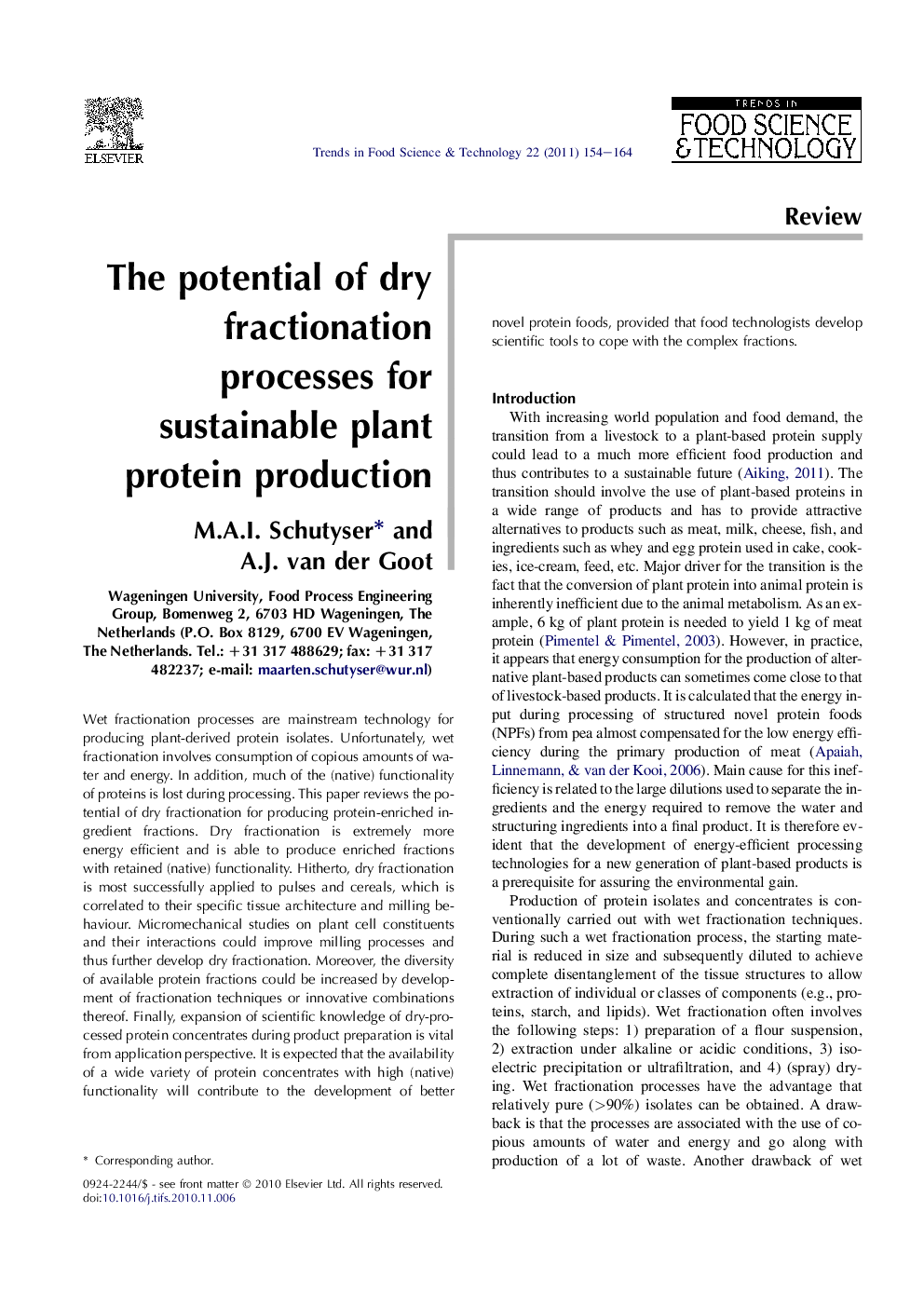| Article ID | Journal | Published Year | Pages | File Type |
|---|---|---|---|---|
| 2099060 | Trends in Food Science & Technology | 2011 | 11 Pages |
Wet fractionation processes are mainstream technology for producing plant-derived protein isolates. Unfortunately, wet fractionation involves consumption of copious amounts of water and energy. In addition, much of the (native) functionality of proteins is lost during processing. This paper reviews the potential of dry fractionation for producing protein-enriched ingredient fractions. Dry fractionation is extremely more energy efficient and is able to produce enriched fractions with retained (native) functionality. Hitherto, dry fractionation is most successfully applied to pulses and cereals, which is correlated to their specific tissue architecture and milling behaviour. Micromechanical studies on plant cell constituents and their interactions could improve milling processes and thus further develop dry fractionation. Moreover, the diversity of available protein fractions could be increased by development of fractionation techniques or innovative combinations thereof. Finally, expansion of scientific knowledge of dry-processed protein concentrates during product preparation is vital from application perspective. It is expected that the availability of a wide variety of protein concentrates with high (native) functionality will contribute to the development of better novel protein foods, provided that food technologists develop scientific tools to cope with the complex fractions.
